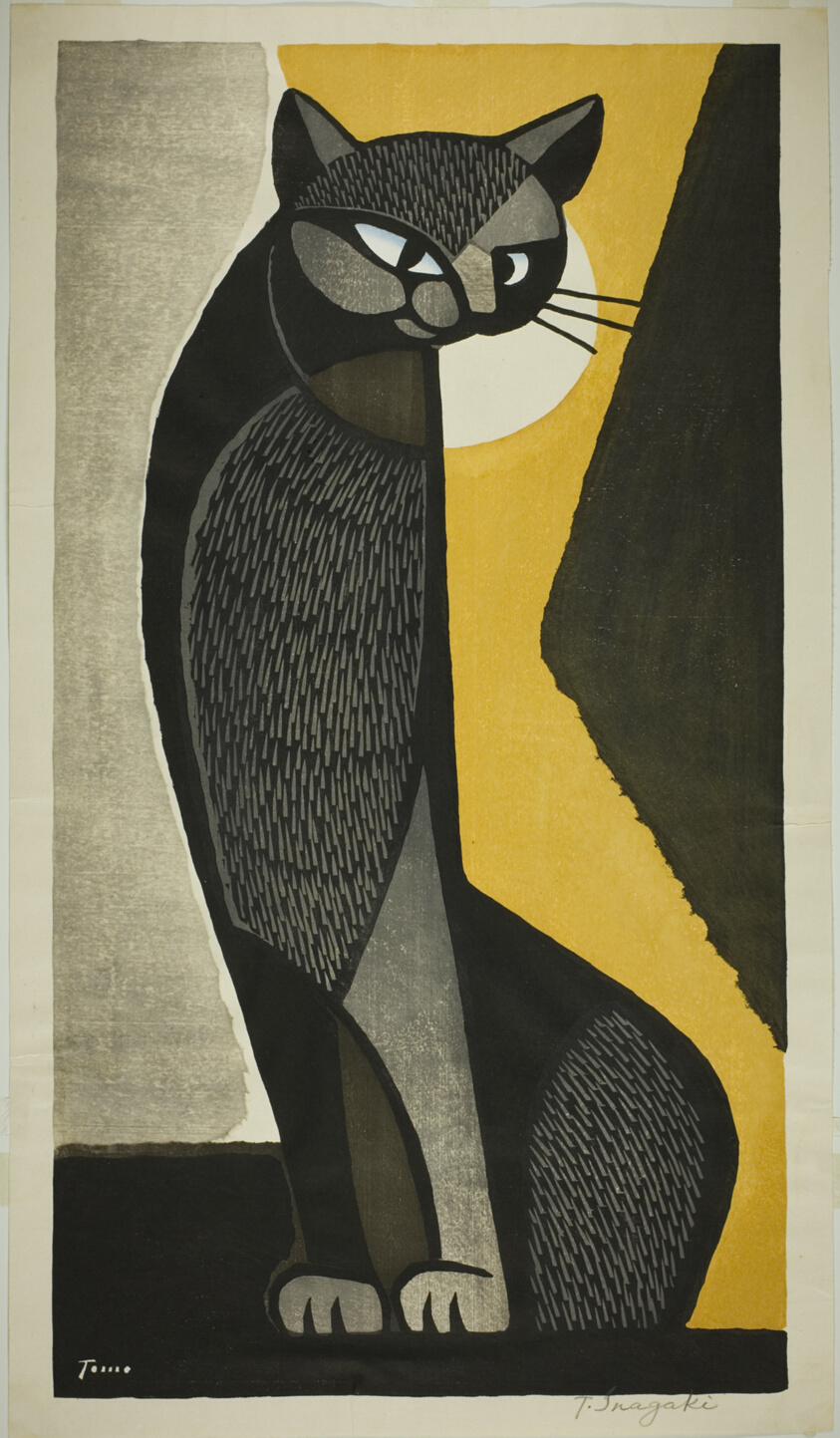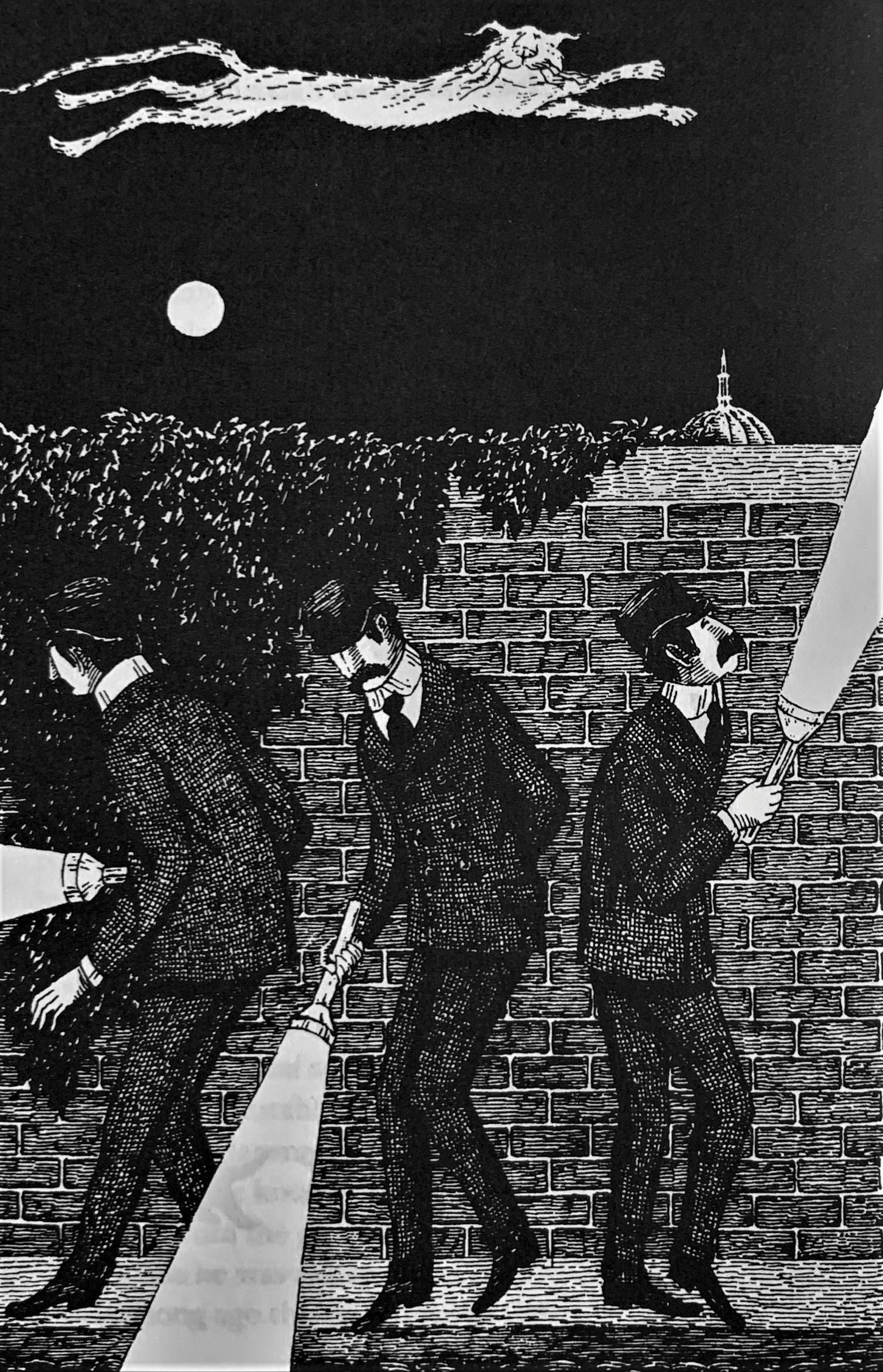"Real cats are not simply self-possessed. Nor are they simply neurotic. They are both, at the same time, just like real people."
"Cats are very much like you and me", T. S. Eliot mused in his famous naming of cats. The great Eliot, visionary of alternate yet probable worlds, brought his massive intellect to bear on felines (it comes to us all) and reflected that cats have three names: one their owners use, one the world uses, and one known only to cats.
Cats do keep something to themselves, a secret first-world language (Mary Oliver called it) whose context we might have forgotten, but whose sounds we remember. Loving a pet is like loving a child: completely instinctual and at times unbearable. It is a love that does not know its limits. I have happiness for my cats that is so massive it tips into sadness. There is a pinch of longing in cat love which I did not understand until I read these lines from Doris Lessing, a lifelong cat owner and speaker of this lost, primitive language:
I sit down to be with him, it means slowing myself down, getting rid of the fret and the urgency. When I do this - and he must be in the right mood too, not in pain or restless - then he subtly lets me know he understands I am trying to reach him, reach cat, essence of cat, finding the best of him. Human and cat, we try to transcend what separates us.
 Doris Lessing and friend, 1950.
Doris Lessing and friend, 1950.I collect people who love cats on The Examined Life, but it must be a specific type of love. Not merely tolerance but that dual love and longing to get to know the cat as cat, not a human interpretation of cat. Does that make sense?
Probably not, but here is Terry Pratchett to help.
 The unadulterated Terry Pratchett lying where he pleases. Like a cat.
The unadulterated Terry Pratchett lying where he pleases. Like a cat.Sir Terence David John Pratchett OBE (April 28, 1948 – March 12, 2015), or to use his second name, Terry Pratchett, was a creator of phantasmagorical worlds so rich you would swear you had been twice. Is imagination required to know the essence of cat? (Yes, Ursula le Guin also loved cats, which proves it.)
In Unadulterated Cat: A Campaign for Real Cats, Pratchett confirms he knows cats as cats. He writes "Cats have a way of always having been there, even if they've only just arrived."
In our house, we call it ghosting (before it became an immature social aversion). The boys (our two Siamese) whisk in and out of human sightlines, silently like owls yet sturdily situated as if they materialised out of thought, memory, or space itself. Had they always been there? When did they arrive? Did Einstein look at a cat when he theorised special relativity? He must have done so, their physicality is completely their own.
With the complexity that originates from being raised in a country that adores its pets, Pratchett understands a real cat is what they are, not what we turn them into.
"Cats just turned up," writes Pratchett, with clear, first-hand knowledge.
On the one hand, we have these great tawny brutes that sit yawning under the hot veldt sun or burning bright in jungles, and on the other there's these little things that know how to sleep on top of off-peak heaters and use cat doors. Not much in between, is there? A whole species divided, basically, between 500lbs of striped muscle that can bring down a gnu, and the pounds of purr. Nowhere do we find the Piltdown Cat, the missing lynx. All right, there's the wild cat, but that just looks like your average domestic tabby who's been hit on the head with a brick and got angry about it. No, we must face it. Cats just turned up.
Cats might come from nowhere and everywhere but Pratchett managers to herd them - intellectually at least - into real cat buckets. Sorry, clowders.
1. Farm Cats
A dying breed. Once upon a time every decent barn supported a thriving, incestuous colony of them, depositing small nests of mewling kittens amongst the hay-bales, and there's still a few around. Worth getting if you can. They often look like flat-headed maniacs, but they've generally got a bit of sense. Not usually found on the kind of farms that are apparently made of extruded aluminum, but still scratching a living here and there.
2. Black Cats with White Paws
There must be a breed of these. Most Sub-Post Office cats are black cats with white paws. They are always called Sooty.
 "Inagaki Tomoo's "Black cat", 1960. Inagaki was a self-taught Japanese artist who made numerous woodcut prints of cats although not until the artist was fifty years old. Learn more.
"Inagaki Tomoo's "Black cat", 1960. Inagaki was a self-taught Japanese artist who made numerous woodcut prints of cats although not until the artist was fifty years old. Learn more.3. Neighbours' Cats
Usually grey, and often seen in the newly seeded bit of the garden with a strained expression on their faces. Normally called Yaargeroffoutofityer bastard.
4. Boot-faced Cats
They have fangs, crossed eyes, enough scars to play a noughts and crosses championship on, and ears like old bus tickets. They've invariably male. Boot-faced cats aren't born but made, often because they've tried to outstare or occasionally rape a speeding car and have been repaired by a vet who just pulled all the bits together and stuck the stitches in where there was room.
5. Sort of Tabby Cats with a Bit of Ginger But Sometimes In the Right Light You Could Swear There's a Hint of Siamese There
Your basic Real cat. Backbone of the country's cat population.
 "Macavity, Macavity, there's no one like Macavity..." Illustration by Edward Gorey for T. S. Eliot's Old Possum's Book of Practical Cats
"Macavity, Macavity, there's no one like Macavity..." Illustration by Edward Gorey for T. S. Eliot's Old Possum's Book of Practical Cats6. Factory Cats
Like farm cats, now ambling their way into history. They were once kept because they did a useful job of work, but now they're often the subject of friction between management, who want them out because they don't fit in with the new streamlined image of United Holdings (Holdings) plc, and staff, who don't. Usually, someone called Nobby or Dotinthecanteen smuggles in food for them. Some factory cats get to be quite famous and have their pictures in the staff newspaper when they retire. The picture always shows Nobby or Dotinthecanteen holding a saggy black-and-white cat which is staring at the camera with quiet, self-satisfied malevolence. On retirement, they set up home with Dotinthecanteen but saunter down to the old firm occasionally and hang around while the working cats are going through a busy patch, telling them how much better they feel these of course you days, wish they'd done it years ago, lads don't know what it was like when Mr Morgan was manager, what a tartar he was, if he saw so much as a mouse doodah he went spare, you were kept at it in those days......and then they saunter back home, and have a nap.
 Cat sleeping in purled perfection in the garden. Photograph by sensible, colourful gardener and garden designer Gertrude Jekyll.
Cat sleeping in purled perfection in the garden. Photograph by sensible, colourful gardener and garden designer Gertrude Jekyll.7. Arch-villains' Cats
Always fluffy and white, with a diamond-encrusted collar. Other qualifications include the ability to yawn photogenically when the camera is on them and complete unflappability in the presence of people dropping through the floor into the piranha tank. We've all seen Arch-villains' cats. However, it's not the easy life that it appears to be. For one thing, the people who design the megamillion underground yacht bunkers and missile bases in which the arch-criminals live never think to include a dirt box. If they did, it would be surrounded by landmines and have ingenious and unpleasant traps buried in it. And Arch-villains' cats never use a cat door. This is because they know what happens to people who go through doors.
 Lewis considering a career in arch-villainy.
Lewis considering a career in arch-villainy.8. The Green, Bio-Organic, Whole Earthbox Cat
This type has been around since the sixties at least. You may recall stories about cats fed on sweetcorn and avocados (no, really; a local pet shop sells vegetarian dog food). And, indeed, if the rest of the household is on the path of inner wholeness it rather lets the whole holistic business down to have tins of minced innards in the fridge. We had vegan* friends who handled the cat food tin in the same way that people at Sellafield handle something that's started to tick. In the end, they worked out a vegetarian diet with the occasional treat of fish. Their cat was a young Siamese. It thrived on the stuff. Of course it did. It used to go out and hang around the organic goat shed, and ate more rats and mice than its owners had hot dinners, which wasn't hard. But it was very understanding about it, and never let them know. We occasionally saw it trotting over the garden with something fluffy in its mouth, and it used to give us looks of conspiratorial embarrassment like a Methodist minister caught enjoying a pint.
Zipping back to Eliot: cats have a name they hold from us. I agree. We can tame cats, own them even. But we will never fully possess a cat. It takes a sophisticated mind to accept that in full. Alice Walker's daughter once told her mother that the novelist was "mature enough to own a cat" which just about sums it up.
"Real cats are not simply self-possessed" Pratchett confesses, "Nor are they simply neurotic. They are both, at the same time, just like real people." There is so much to see and do and cherish and tsk-tsk at cats but it all comes down to this: they are much like you and me, and yet so utterly like themselves. Is there anything better?


